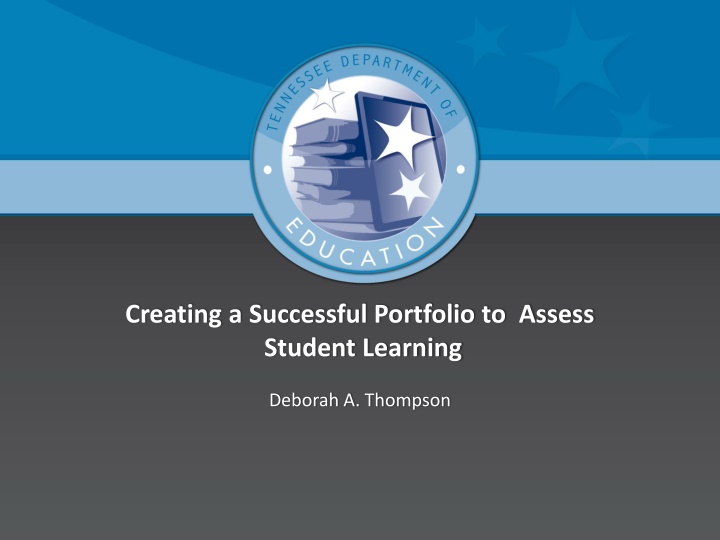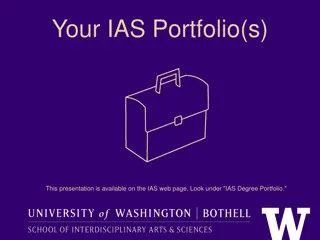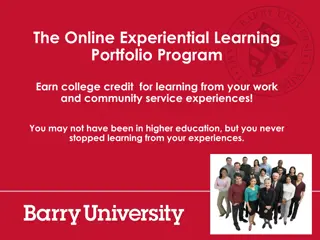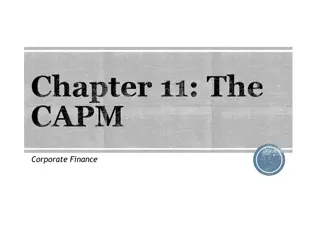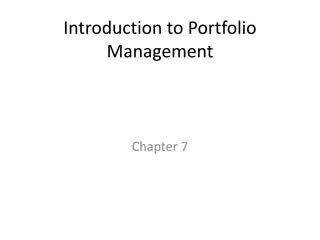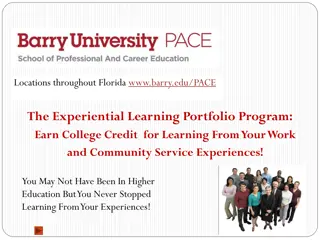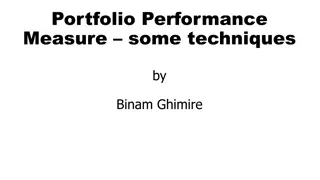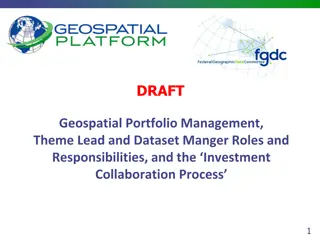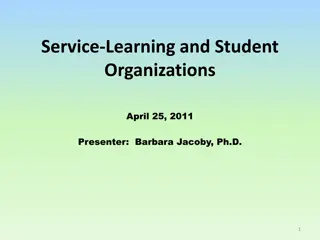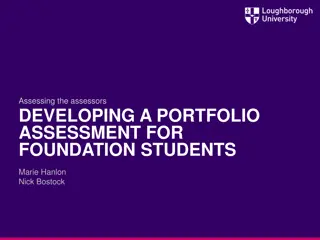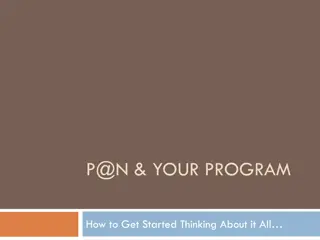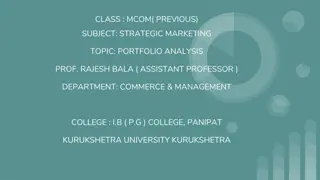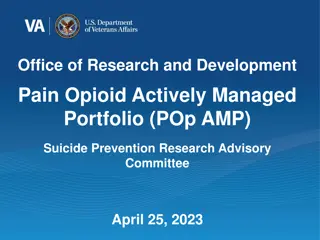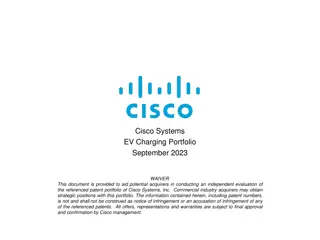Creating a Successful Portfolio to Assess Student Learning
A student portfolio is a purposeful collection of work that showcases efforts, progress, and achievements in a curriculum area. It is a reflective tool that captures growth over time and encourages self-directed learning. Portfolios provide a holistic view of student skills and understandings, aligning with stated learner outcomes and facilitating continuous assessment. This article explores the benefits and implementation of portfolios in assessing student learning.
Download Presentation

Please find below an Image/Link to download the presentation.
The content on the website is provided AS IS for your information and personal use only. It may not be sold, licensed, or shared on other websites without obtaining consent from the author.If you encounter any issues during the download, it is possible that the publisher has removed the file from their server.
You are allowed to download the files provided on this website for personal or commercial use, subject to the condition that they are used lawfully. All files are the property of their respective owners.
The content on the website is provided AS IS for your information and personal use only. It may not be sold, licensed, or shared on other websites without obtaining consent from the author.
E N D
Presentation Transcript
Creating a Successful Portfolio to Assess Student Learning Deborah A. Thompson
Creating a Successful Portfolio to Assess Student Learning Deborah Thompson Education & Training, Hospitality & Tourism, and Human Services Career Cluster Consultant Deborah.Thompson@tn.gov (615) 532-2840 www.tn.gov/education/cte CTE.Questions@tn.gov Realizing Postsecondary and Career Readiness through CTE 2
Objectives By the end of today s session each of you will: 1. Understand how to implement a portfolio to assess your students. 2. Create a rubric to assess student learning through a portfolio. Realizing Postsecondary and Career Readiness through CTE 3
Understanding the Student Portfolio Realizing Postsecondary and Career Readiness through CTE 4
What is a Portfolio? What Is a Portfolio? A purposeful collection of student work that exhibits the student's efforts, progress, and achievements in one or more areas of the curriculum. A portfolio is NOT: A collection of assignments, without reflection or editing. A scrapbook of assignments. A portfolio should be the following: A representation of student-selected work samples. Evidence of a student's self-reflection and outcomes being assessed. Artifacts recording growth and development toward mastering identified outcomes. Realizing Postsecondary and Career Readiness through CTE 5
Why Use a Portfolio? Portfolios enhance the assessment process by revealing a range of skills and understandings while reflecting change and growth over a period of time. Portfolios provide opportunity for documentation of continued growth from one year to the next. A variety of specific purposes, including: Encouraging self-directed learning Demonstrating progress toward identified outcomes Creating an intersection between instruction and assessment Providing a way for students to evaluate themselves as learners Realizing Postsecondary and Career Readiness through CTE 6
Why Use a Portfolio? They clearly reflect stated learner outcomes identified in the core or essential curriculum that students are expected to study. They focus upon students' performance-based learning experiences as well as their acquisition of key knowledge, skills, and attitudes. They contain samples of work that stretch over an entire marking period, rather than capture single points in time. They contain works that represent a variety of different assessment tools. Realizing Postsecondary and Career Readiness through CTE 7
Portfolio Assessments Portfolio assessments are continuous and ongoing, providing both formative and summative artifacts for monitoring students' progress toward achieving essential outcomes. Portfolio assessments are multidimensional and exhibit a variety of artifacts and processes reflecting various aspects of students' learning processes. Portfolio assessments are a collaborative reflection, including ways for students to reflect about their own thinking processes and metacognitive introspection as they monitor their own comprehension. Realizing Postsecondary and Career Readiness through CTE 8
What to include in a Portfolio? Each course has a recommended list of artifacts to include in the student s portfolio. This is not an exhaustive list of artifacts, rather suggestions. What are some other items to include? Realizing Postsecondary and Career Readiness through CTE 9
Example Rubric Realizing Postsecondary and Career Readiness through CTE 10
How to Create a Portfolio Rubric 1. Identify what to include in portfolio 2. How will you assess the artifact? Outline the elements or critical attributes to be evaluated. Remember that these attributes must be objectively measurable. 3. Create an evaluative range for performance quality under each element; for instance, excellent, good, unsatisfactory. 4. Add descriptors that qualify each level of performance: Avoid using subjective or vague criteria such as interesting or creative ; instead, outline objective indicators that would fall under these categories. The criteria must clearly differentiate one performance level from another. 5. Assign a numerical scale to each level. Additional resources on creating rubrics can be found at http://www.tncore.org/literacy_in_science_and_technology/ assessment/scoring_resources.aspx Realizing Postsecondary and Career Readiness through CTE 11
You Do Now, create a rubric for four course artifacts for implementation in the upcoming school year. Resources: Consultant Group Partners Example Rubrics Course Standards Realizing Postsecondary and Career Readiness through CTE 12
